| Michigan DOT's High Quality HARs Help Make "Mighty Mac" Mighty | | Decades of Information Broadcasts Aid Safe Mackinac Bridge Crossings |  |  | Every Labor Day, Mackinac Bridge Authority holds an annual walk. Thousands traverse the Bridge's 5-mile span.
Photos Courtesy of Mackinac Bridge Authority | Two stations broadcast the same content on different frequencies: north-1610 kHz; south 530 kHz. This allows the programming to be received along Interstate 75 for more than 30 miles. | SAINT IGNACE, MICHIGAN: It makes sense for the Western Hemisphere’s biggest suspension bridge to have something else big to boast about: the Mackinac Bridge, built in 1957 in Northern Michigan, also sports the widest audio bandwidth of any Highway Advisory Radio Stations operated by any department of transportation in the 50 states.
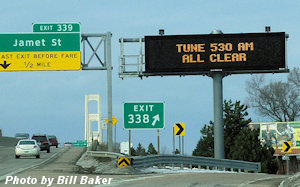 In 2022, the pair of Highway Information Radio Stations (WNHC787) that bracket the Straits of Mackinac celebrated 35 years of continuous operation. Provided by Information Station Specialists, they are the only pair of stations ever installed on two operating frequencies with a 5-mile bridge in between. Moreover, they are arguably the longest continuously-operating Information Stations in the United States. In 2022, the pair of Highway Information Radio Stations (WNHC787) that bracket the Straits of Mackinac celebrated 35 years of continuous operation. Provided by Information Station Specialists, they are the only pair of stations ever installed on two operating frequencies with a 5-mile bridge in between. Moreover, they are arguably the longest continuously-operating Information Stations in the United States.
The signals were licensed back in 1987, when only the two original frequencies were available – 530 and 1610 kHz. Each station has the same content but is on a different frequency: north-1610 kHz; south 530 kHz. This allows the programming to be received along Interstate 75 for more than 30 miles – helpful to drivers should the span be closed or restricted due to high winds, inclement weather or a traffic incident. And then there is the annual “Bridge Walk” – an event that closes the bridge to all vehicle traffic every Labor Day so fans of the "Mighty Mac" can cross it on foot.
During the past 35 years, the Mackinac Bridge Authority has replaced the radio antennas once and has increased the stations’ audio bandwidth to 5 kHz, after the FCC allowed the upgrade in 2015. In 2017, after FCC approval of new 5000 Hz filters for TR.6000 Transmitters that effectively expands HAR stations' bandwidth by almost 70% without the necessity for transmitters to be recertified, the Bridge Authority installed those upgrades too. The difference in overall audio quality and intelligibility quickly became apparent.
Originally, broadcast messages were spoken into a RAM-based audio recorder that fed the two locations via audio lines – one of which was five miles long. Brent Garries tells The Source that today the program originates from a Notepad/program mixer that repeats and distributes the content to the two locations. For talent, they have used professional announcers, MDOT representatives and even the Bridge Authority’s executive secretary, upon occasion.
Undoutedly, the Mackinac Bridge Authority's information broadcasts have made the Straits of Mackinac a safer place to cross. | | * * * | | When Ice Cometh | | Motorist Advisories Trigger Instantly when Conditions Get Dicey | KINGMAN, AZ: When Hualapai Mountain Road near Kingman, Arizona, becomes treacherous due to ice, county officials don’t need to concern themselves with changing the messages being broadcast on the County’s Highway Advisory Radio Station. It all happens automatically.
Conditions on the steep, two-lane road often change without warning. When ice is detected, pavement sensors trigger a paging burst that is relayed to an ALERT AM Advisory Radio Station on the mountaintop that instantly switches its broadcast to exclusively air warning messages to motorists. When conditions improve, the station’s broadcast goes back to normal, all without operator intervention. The same wireless cue has the capability of triggering other devices such as flashing beacons / LED signs in concert with the radio station’s message change.
The Information Radio service was installed by Mohave County’s Public Works Department in 2017 to advise commuters who use the steep mountain road that dangerous ice is present on the pavement. A secondary goal is to enhance safety for visitors approaching or leaving the popular Mohave County Regional Park, which sits atop the mountain, some 3,000 feet above the city. Hualapai Mountain Road is the sole means of getting to the Park – and often more importantly − back down the mountain.
Stated Mohave County’s traffic control supervisor at the time Gregg Whaley, “This radio application proves a successful addition to the County’s motorist information network, in the observation of Public Works, road users and citizens served.” | | * * * | | National Lab Threatened by Flames | | Evacuees Updated in Real Time by ALERT AM | 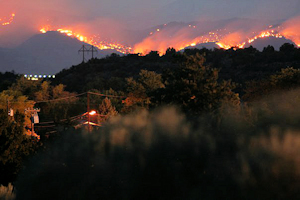 |  | It's clear why Los Alamos was selected as the site of the Manhattan Project during WWII: there are only two roads in and out, one from the East and one from the West.
Photos Courtesy of Philmont Taylor, Los Alamos County, NM | LOS ALAMOS, NM: Residents and workers fleeing the flames near Los Alamos National Laboratory in 2011 listened to AM 1610 to receive special directions and fire updates. With only two roads leading in and out of the area, motorists had few evacuation options. The special radio service was initiated in 2007 by Los Alamos County’s Office of Emergency Management, with the knowledge that some day it would be called on to protect lives and property.
Said then Emergency Manager Phil Taylor, "Our community's experience with the Cerro Grande fire of 2000 and the recent Las Conchas fire prompts frequent calls to 911 asking if they need to evacuate for even the slightest hint of smoke in the air."
Dual ALERT AM Stations and Flashing ALERT Signs in Los Alamos and White Rock not only provide motorists details about wildfires but also traffic accidents causing road blockages, road construction and emergency drills at the Los Alamos National Laboratory. Two transmitting facilities cover the population in the area, each covering 25-75 square miles.
"Shortly after the OEM was activated, I put out an announcement containing situation analyses and for folks with respiratory sensitivities to consider voluntary evacuation. The second day, I used 1610 a LOT along with our reverse 911 to do the actual evacuation of the town site. I had to do it in four stages, and later on, a final 'you MUST get out NOW..." message. ...I must've changed messages at least three times each day, with just station ID and situational awareness messages running on the active playlist (no weather). I'm now broadcasting at least one fire-related message, road closure info and weather loop. About the only improvement I can think of right now would be ... to stream 1610, since most folks have computers, and even if they're evacuated out of the coverage range, they could still listen."
Dual ALERT AM stations were first set up by EOC personnel in 2007. Taylor described the rationale: "Our fundamental emergency public information requirements probably don’t differ substantially from those of any other jurisdictions. Primarily, we’re interested in a methodology that will allow us to expeditiously communicate emergent information to as many people as possible within our jurisdictional boundaries. We have the following constraints/challenges: - Small, isolated, mountain community – two roads leading in/out – deep canyons and high mesas.
- Limited commercial radio/TV coverage.
- Large daytime transient population/commuters who work at a National Laboratory.
"Possible emergency scenarios include . . . - Severe weather events with corresponding school/Laboratory closures.
- Traffic accidents that interrupt normal commutes.
- Evacuation/shelter-in-place instructions.
- Any emergency public warning/information that needs to be disseminated RIGHT NOW.
"We used these creative methods to make citizens aware of the station: - Press release (he got the local press to do an article right after the station went 'live').
- Bill-stuffer in utility bills.
- Laboratory incorporation of the press release in their internal newsletter.
- Mention of the station by EOC personnel at every speaking opportunity.
- The schools send info home with the kids.
- Refrigerator magnets, pens and pencils to hand out at fairs, booths.
- Descriptive blurb with EOC email signatures."
|
| | [insert pic] | | [insert date] | | DelDOT's Unique All-State Synched Highway Radio Service | 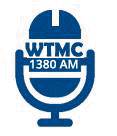 DOVER. DE: Delaware's Department of Transportation has built a Highway Advisory Radio (HAR) system that stands apart from similar systems in the other 49 states. Due to its limited geography and high population density, Delaware has been able to accomplish something not possible elsewhere: virtual statewide signal coverage that reaches millions of motorists. DOVER. DE: Delaware's Department of Transportation has built a Highway Advisory Radio (HAR) system that stands apart from similar systems in the other 49 states. Due to its limited geography and high population density, Delaware has been able to accomplish something not possible elsewhere: virtual statewide signal coverage that reaches millions of motorists.
Radio World magazine, in 2019, featured DelDOT in a national article that put a spotlight on their system’s unique character, i.e., "DelDOT Believes in the Power of Radio" by James Careless, Apr 9, 2019.
Delaware is the only state that:
- Purchased and operates a former AM broadcast station – rebranded “WTMC - 1380” operating at 250 watts in Wilmington, Delaware - as the centerpiece of their HAR network.
- Blankets the state with a single highway radio information program on synchronized 10-watt “repeater” stations, to create border-to-border service on the 1380 AM frequency.
- Operates within the conventional AM band on Frequency 1380. (Most HAR stations are at the end of the band (530 kHz or 1610-1700 kHz).
- Also simulcasts on FM translator WTMC heard on 98.5 FM in the Wilmington area.
| | * * * | | . . . Or, you can pay later. | | Toll road tells how to pay those who don't have an account. | 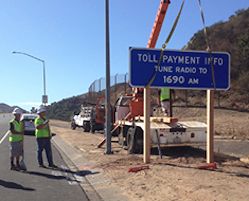 | Workers install a sign announcing the new Highway Advisory Radio (HAR) service on Orange County toll roads.
Photo Courtesy of Orange County Tollroad Corridor Agencies | IRVINE, CA: If you drive on a toll road in California’s Orange County and don’t have an account, you will be told what to do − literally. Transportation Corridor Agencies (TCA), which operate the County’s four toll roads, will tell drivers via radio how to make things right when they get home.
“Go to TheTollRoads.com. Choose the 'One-Time Toll' option and follow the directions to pay,” advises an announcer. “You can also download 'The Toll Roads' free mobile app to pay one-time tolls on your smart phone.”
 Click here to listen to a sample of the broadcast. Click here to listen to a sample of the broadcast.
TCA began the special broadcasts in September 2014 at Windy Ridge and Catalina View toll plazas on the 241 and 73 toll roads. The educational campaign was planned for a year. “We saw radio communication as an important tool to reach toll road drivers who need to know how to pay their tolls online. Most of our customers are located in Orange County or the surrounding areas and are aware that they need an account to pay the toll. For infrequent drivers and visitors, we needed a clear way to explain how they can pay online after their trips. By augmenting on-road signage with the option to listen to the payment message while driving, we hope to ensure that Orange County visitors have a pleasant experience while diving the toll roads,” said Lisa Telles, chief communications officer for The Toll Roads.
California utilized two temporary portable Highway Advisory Radio systems called EventCAST from Information Station Specialists to provide the broadcast services. | | * * * | | Kentucky County Advises Motorists when NOT to Enter Interstate | 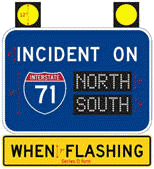 | LA GRANGE, KY: Ramp metering controls the rate at which drivers merge onto a busy thoroughfare. But Oldham County, Kentucky, goes one step farther by advising motorists when NOT to enter their busy highway – at all!
The County, adjacent to Louisville, is bisected by Interstate 71, a major commute route into and out of the city. When a major incident backs up I-71 traffic, unaware drivers often inadvertently add to the congestion and cost themselves time by entering the fray at one of the County’s four interstate interchanges. Eight wirelessly controlled, solar-powered signs installed in advance of the associated entrance ramps tell people to stay on the surface streets when interstate gridlock sets in.
When activated, the signs’ 12” amber beacons flash to attract attention; while “Stealth Sign” LED displays can be independently selected to advise against going north, south or both north and south.
Designed and obtained in 2019 in coordination with the Kentucky Transportation Cabinet, the unique system is controlled on a VHF frequency from Oldham County Emergency Management’s 911 Center at La Grange, Kentucky. |
|

